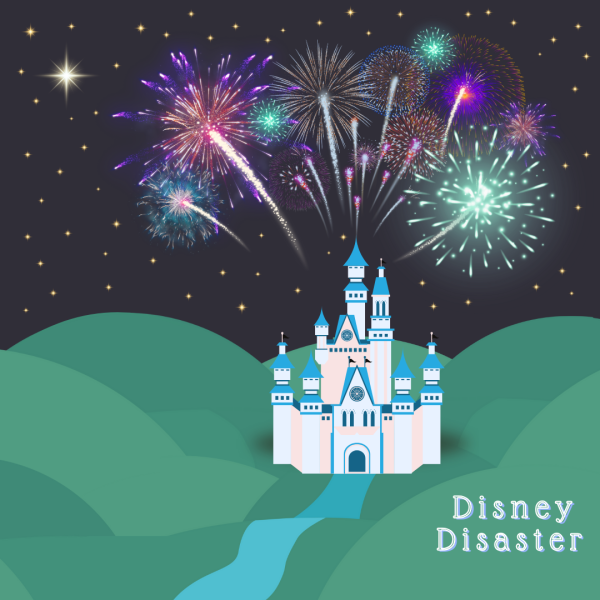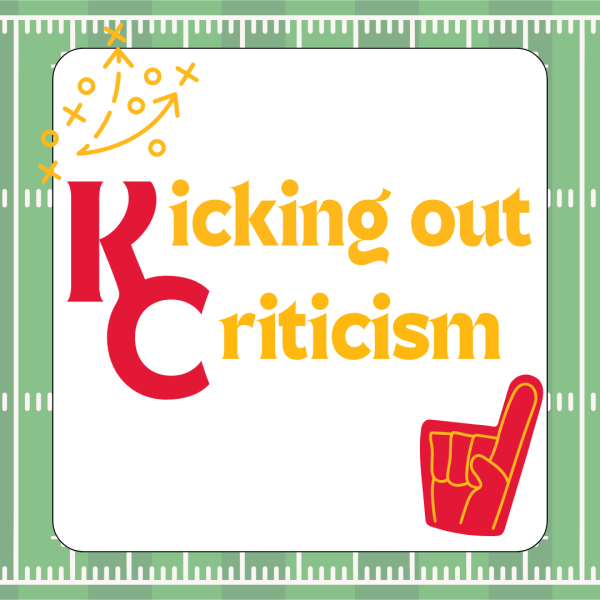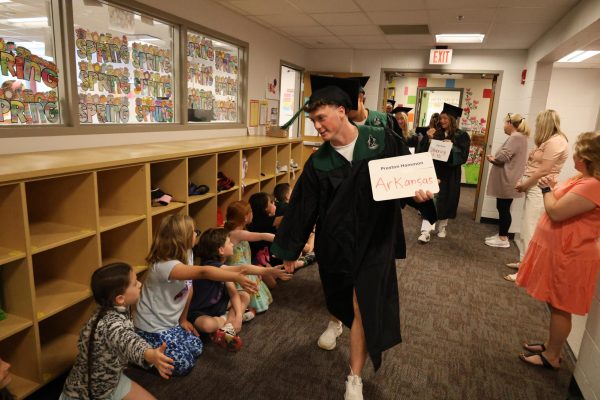Media should cover real-life issues teenagers face
Sitting in her basement one summer night, senior Tyler Huffstuttler scrolls through Netflix for something to watch. She comes across a new movie with an actress she likes, Lily Collins, about a topic she’s never learned much about, called “To the Bone.” A Netflix original, “To the Bone” is one of few movies that deals with an issue not normally seen in mainstream media: eating disorders.
While mental disorders are not new as plot devices in movies or TV shows, recent portrayal of these issues in a very honest and blunt manner — something that has been lacking in everyday media — has raised some controversy. “To the Bone” and “13 Reasons Why” are primary examples of popular media that has broadcasted sensitive issues such as eating disorders, depression and suicide to a wider audience, effectively starting much-needed conversations on the topics. Huffstuttler said she enjoyed both programs due to the fact that they dealt with ideas she didn’t know much about.
“It’s kind of depressing topics, and makes other people uncomfortable, I think, and they don’t like it, but I thought it was good to get people thinking about it,” Huffstuttler said. “People think ‘Oh, this is actually a thing,’ instead of ‘Oh, it’s not that big of a deal.’ So it accentuates on the facts that those issues are actually a reality for people.”
Similar to Huffstuttler, sophomore Sarauvi Shankar said that while she first started watching “13 Reasons Why” because it was so popular, she was also intrigued by the uncommon theme of the show. Due to its popularity, she said she was surprised to discover how in-depth it was.
“I didn’t expect shows to be that revealing; they didn’t really hold anything back,” Shankar said. “They told the truth. I feel like ‘13 Reasons Why’ might have exaggerated the truth a little. That doesn’t necessarily happen to everyone who has these kinds of thoughts and feelings, but it was definitely thought-provoking, and it opened people’s eyes to the truth that teenage people go through. It really struck me.”
In a survey of 100 students, six percent strongly agreed that the majority of high school students understand the signs and symptoms of mental illness. Shankar said mental illness is starting to gain more attention due to the media, films and shows like “13 Reasons Why” and “To the Bone” being one source.
“Mental illness is usually tucked under the rug; honestly, people don’t really talk about it,” Shankar said. “I feel like mental illness is romanticized too, because people feel like it’s cool; it’s trendy. No, these people are suffering, and these types of shows show that; they show what people are going through. They show them in gruesome ways, too. They don’t hold back, and I think that’s
what people need to see — just how bad these things are — and that they shouldn’t be taken lightly at all. Mental illness, honestly, is just as dangerous as physical illness if it’s not treated.”
The popularity and brutal honesty of these shows, however, has caused controversy as to whether this genre of media promotes self-harm. While these topics are sensitive and sometimes uncomfortable, it’s important to not hide them in the shadows while there are people going through it every single day.
“Any time that this stuff comes up, there will be one person who takes it too far and say ‘this is not acceptable’ because they don’t want to accept the fact that in reality, that is how some people are,” Huffstuttler said. “They just don’t want to come to terms with not everybody’s life is perfect. Not saying that their’s is, but they don’t deal with such severe things, so their solution is to just not talk about it at all. You can’t avoid reality; you can’t avoid the bad. That’s not how life works, but some people think that they can control this.”
Since some people are more sensitive on the topic than others, Huffstuttler said her peers who struggle with similar issues depicted in these types of shows disagree on whether or not this genre is more helpful or harmful. Often those who attack it, though, are the people who don’t deal with these personally, so they cannot comprehend that this is some people’s reality, Huffstuttler said.
“Yes, it is awful, it’s kind of grotesque, it’s not fun to think about, but it is reality, so some people that attack it don’t really grasp the concept that this is life, this is what people actually go through,” Huffstuttler said. “If you saw these people, would you be attacking them because they have this, or would you try to treat them with a little more respect and concern and comfort?”
Criticism will always be present, however, so those who need to share their messages on these subjects should not avoid doing so, even if they might face disapproval. Junior Arrington Ervin said it is the delivery of the message that can make a difference in how the audience perceives it.
“It’s difficult because when you make something like that, you’re definitely going to go through some criticism,” Ervin said. “[Some] people are definitely not going to like what you put out there but if people understand the message clearly enough, I think they’ll be OK.”
Because of the powerful messages of these shows, Shankar said she would like to see an expansion of this category of media.
“I would definitely watch more stuff like this because I feel like it gives me a better understanding of what’s going on,” Shankar said. “These things are written by people who’ve had experiences with this stuff, especially ‘To the Bone’ where they tell you that it was written by people who suffered through these things. You can tell that it’s real.”
Since “To the Bone” was based off of real-life experiences, Shankar said she felt it was very accurate on how people with eating disorders would think and act. In “13 Reasons Why,” however, Shankar said the story could have been more realistic if help had been more available to the main character.
“I feel like ‘13 Reasons Why’ could have done more to emphasize she was struggling with depression, because it didn’t really do that, it just jumped to the whole suicidal thing, and it didn’t talk about therapy or anything like that,” Shankar said. “It didn’t talk about what she could have done to get help, besides the counselor, and that usually doesn’t happen. Counselors are there to help you; they want to help you. They’re not going to shut you down or anything. I think that was bad because it made people feel like they couldn’t go to anybody to talk about these things and that suicide was their only option.”
In agreement with Shankar, Ervin said if the adults of the show were more involved, like he believed they would have been in real life, then the story’s outcome could have been different. While the story is saddening, it can also be thought-provoking for those experiencing similar issues, and a positive takeaway is still present.
“I feel like they would try and relate to it, but I would hope they would also learn from it, because if you [harm yourself], it can hurt so many people close to you that you wouldn’t understand,” Ervin said. “Just think about how the whole world would react to you not being there.”
Another benefit of these shows is the initiation of conversation about these topics with peers and adults. Huffstuttler said she will discuss these issues with her friends, but her experiences sharing with adults has been more difficult.
“I feel comfortable talking about it with my friends, because I talk to my friends about everything, but I personally haven’t felt comfortable talking to adults about things like that, just because of bad experiences of them either judging me or basically saying, ‘Don’t think that way,’” Huffstuttler said. “My friends are more comforting
because they’re going through the same thing, and most adults either haven’t gone through it or haven’t gone through it in awhile.”
Ervin disagrees, and said he feels that he could go to his parents, coaches, teachers or counselor about anything and they would gladly listen and provide him help. Similar to Huffstuttler, though, he said this generation of high school students has a much different experience dealing with these issues than in the past.
“Now this generation is probably worse because we have more technology, and technology has more cyberbullying,” Ervin said. “We go on social media, just to talk to your friends or post a picture you think is cool, and it can easily get discriminated against, in a matter of seconds. Back then, they didn’t have any of that, they just hung out with their friends, but now we have that along with any bullying they might receive verbally or physically at school.”
This combination of cyberbullying and mental illness can be dangerous for students experiencing both, making it even more important for it to be possible for students to be able to discuss their struggles with peers and not feel like they have to go through this alone. For those not experiencing these issues, it is easier to laugh or joke about it, but mental illness is a serious matter, and what they view as a joke could hurt someone else.
“You don’t know what’s going on in someone else’s life,” Shankar said. “You might be joking with your friend, but they might actually be going through these things, and they might take it really harshly. Even if they’re laughing and stuff, you don’t know what’s really going on inside someone, so you have to be careful about these things, because you never know if you could accidentally hurt someone.”
The best way to combat this and make sure everyone receives the care and support they deserve, Shankar and Huffstuttler agreed, is to be there for one’s friends in times of need.
“Just be kind,” Huffstuttler said. “Always let them know that you are there for them, even if they don’t believe you, which a lot of people have trouble with that. Just remind them that you are there for them no matter what, and then uphold that promise and if they need you, be there for them.”












